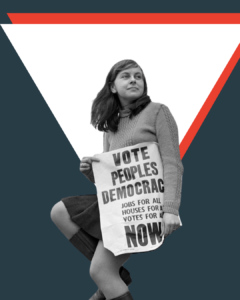In a nutshell, because political cartoons have a lot to say about the state of our world. They immediately stimulate discussion and, more importantly debate. They offer a view or a perspective, most often one that is probing, challenging, controversial. As such political cartoons can contribute to one of education’s core objectives – the building of critical thinking.
Their value includes:
- Making us stop and think again about an issue
- Helping us to look at a topic ‘sideways’ or from a different angle
- Encouraging us to ‘read’, analyse, critically assess, and debate a perspective or topic
- Exploring our own and other’s ‘thinking’ about an issue
- Offering a wider world perspective
- Stimulating group discussion and debate
- Making links between topics
- Learning to laugh at ourselves…together
It is a cliche to say that the world is getting smaller, but it is nevertheless true. It is also arguably becoming more complex, more unequal, more unjust, and ultimately, in an age of climate change, more unstable. We need to understand this and come to terms with it, for it affects us all. Development Education is about these challenges; it is ultimately about how the world relates to us and how we relate to the world.
6 activities for using cartoons
1. Warming up: what does the cartoon say?
Developing our skills in reading a resource (a cartoon) is an important ‘opener’. Doing this individually and then in small groups will enhance the discussion. The discussion will quickly move away from the cartoon to the interests and concerns of the members of the group. This kind of activity is particularly valuable when working with a new group, or with people who don’t know each other very well. A reasonable amount of time should be allowed for people to work on their initial thoughts and to share ideas.
2. Reading a cartoon
Initially it may be useful to discuss one or two cartoons and work at ‘reading’ them.
- Ask small groups to look closely at the details of a cartoon, what is it saying?
- What different interpretations could be made? What symbols and images are used?
- Who are the characters? What is suggested about the context of the cartoon?
Encourage groups to share their discussions together, steering the discussion away from any issues that arise and concentrate at this stage on reading the cartoons.
3. What’s the theme or issue?
You could use just one cartoon or a group of them to introduce and initially discuss a topic (such as climate change or COVID-19). Using cartoons by Martyn Turner or Brick (on Fairtrade or financial justice issues) or in Thin Black Lines, display a collection of cartoons and invite the group to look closely at them. Working in pairs decide what are the main themes highlighted. How are the theme(s) or issues introduced? What is the cartoonist’s ‘take’ on the issue? Do you agree or disagree with that view? What are your initial ideas on the theme?
This activity will help the group to recognise and then discuss different ideas and viewpoints on an issue or theme.
4. Sharing views
Another useful way to introduce a collection of cartoons is to ask people to choose two or three cartoons from those here which they like most …. or which say most to them about the issues being considered. They could mark these with a sticker with their name on. They could then pair up with someone who has chosen the same cartoons and discuss their choice.
- Are the reasons the same?
- Did they see different things in the same cartoon?
This activity also has the advantage of mixing the group, reviewing a range of cartoons and working with some cartoons more closely. The pairs can then share the highlights of their discussion and introduce one of the cartoons they chose to the rest of the group.
5. ‘Headlining’ changing the context
Invite pairs to choose a cartoon around which they develop a headline, a set of keywords and/or short article. If they use different headlines, does it influence or change the meaning of the cartoon? The pairs could then share their headlines, keywords, or article with the rest of the group.
It may be useful to choose different cartoons and therefore raise a wide range of issues or choose the same one and explore the different ways it is worked into the article.
6. Drawing your own cartoon
At first most of us imagine we couldn’t draw a cartoon but often in an average group of people, there are artists and even budding cartoonists. Encourage the group to work individually or in pairs to create a cartoon of some sort – two ‘talking heads’, an image of planet earth, a mental map, an equation or one using images cut from newspapers or magazines. More tips and ideas available from artist and teacher Don Corgi.
Note: The ideas and activities summarised here are taken from two publications Thin Black Lines and Thin Black Lines Rides Again written and edited by Colm Regan, Martyn Turner and Scott Sinclair and published by Development Education Centre (Birmingham). Both publications can be accessed free.
- For more, explore the ‘What do you see?’ interactive feature based on a single cartoon and 11 political cartoons on Covid-19, vaccine inequality, the arms trade and climate change as part of the Martyn Turner series marking the contribution of one of Ireland’s most distinctive journalists and political cartoonists.
- Tags Cartoons, Martyn Turner, methods




